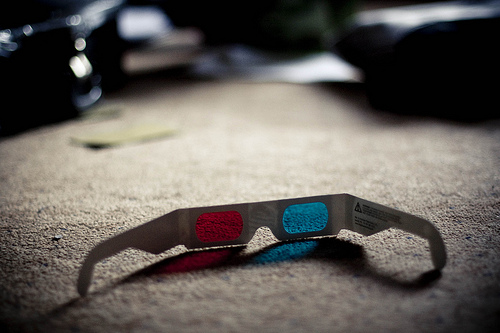In-home 3D Technology May Help Diagnose Vision Problems
The hottest advancement in entertainment technology is 3D. It’s popping up in blockbuster movies, on computer screens and as a somewhat controversial feature in gaming systems.
Although it’s not brand-new, the technology has come a long way and is ready for its close-up.

Are your eyes ready to take it all in?
If you bought, or are thinking about buying, a 3D entertainment system, you may be getting much more out of your investment than you imagined, even if — or especially if — the experience is less than spectacular.
The fact is, some of you may be disappointed with the quality of the new 3D images. Or maybe your kids will reveal when asked that the 3D images on their Nintendo don’t pop out like they expected. Don’t fault the technology: You may have just discovered an undiagnosed vision problem. It turns out that in-home 3D technology might prove to be a useful tool for revealing these problems.
3D viewing systems send different images to the right and left eyes to create the illusion of depth, but without the cues we would normally use to perceive depth in our environment. Minus these cues, some people experience eyestrain, which in turn causes headaches. On the upside, sending different images to the eyes is the feature that helps isolate vision problems an eye chart can’t pick up. For example, people who have a misalignment or amblyopia (“lazy eye”) will not experience 3D as intended. And the headaches, dizziness and other uncomfortable side effects experienced by some people could point to treatable focusing and eye-coordination problems. (For more information visit www.3Deyehealth.org.)
If you experience these problems or are underwhelmed with 3D technology, see your optometrist for a functional eye exam. This is a much more extensive battery of tests than a routine eye exam. The doctor looks for problems like lazy eye, convergence insufficiency, poor focusing skills and intermittent suppression (e.g., one of the eyes “turns off”). Your eye doctor may prescribe vision therapy, which retrains the brain to achieve single, clear, comfortable two-eyed vision that improves eye coordination, focusing and eye movements. That will enhance your 3D technology experience.
My prescription: Take 3D for an occasional spin, but don’t let it or any other screen-based, sedentary pastime take the place of physical activity and healthier forms of leisure.
Dr. Jeff Pinkerton
I care for you.
Have you tried the new Nintendo 3DS? What did you think? Leave us a reply or join us on Facebook.
